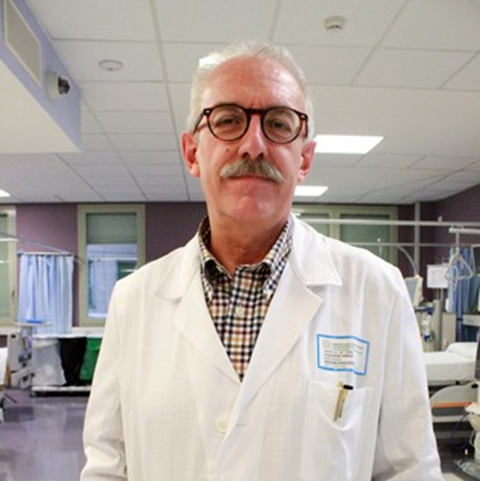Abstract
Guidelines on the use of dialysis treatment in patients with chronic kidney disease (CKD) and TPM (Topiramate) intoxication are controversial. A 51-year-old man with epilepsy and CKD was carried to our emergency department for dysuria and sickness. He chronically assumed TPM 100 mg 3/day. Creatinine level was 2.1 mg/dL, blood urea nitrogen 70 mg/dL, and inflammation indexes were increased.
We started empirical antibiotic therapy and rehydration. The day two he had diarrhea and an acute insurgence of dizziness, confusion, and bicarbonate levels reduction. Brain CT resulted negative for acute events. During the night his mental status worsened, and urinary output results were about 200 mL in 12h. EEG showed desynchronized brain bioelectric activity. Thereafter, there was an episode of seizure and then anuria, hemodynamic instability, and loss of consciousness. Creatinine value was 5.39 mg/dL with a serious metabolic acidosis non-anion gap. We decided to start 6-hours Sustained Low Efficiency Hemo-Dia-Filtration (SLE-HDF). We assisted in the recovery of consciousness and later in the improvement of kidney function after 4 hours of treatment. TPM levels before SLE-HDF resulted in 123.1 µg/mL. At the end of treatment resulted in 30 µg/mL. To our knowledge, this is the first report of TPM involuntary intoxication in a patient affected by CKD who survived such a high TPM concentration treated with renal replacement therapy. SLE-HDF resulted in moderate elimination of TPM and acidemia resolution, continuous monitoring patient’s vital parameters in relation to his hemodynamic instability, since blood flow and dialysate flow are lower than conventional hemodialysis.
Keywords: Intoxication, Sustained Low-efficiency dialysis, hemodialysis, metabolic acidosis, continuous venovenous haemofiltration




